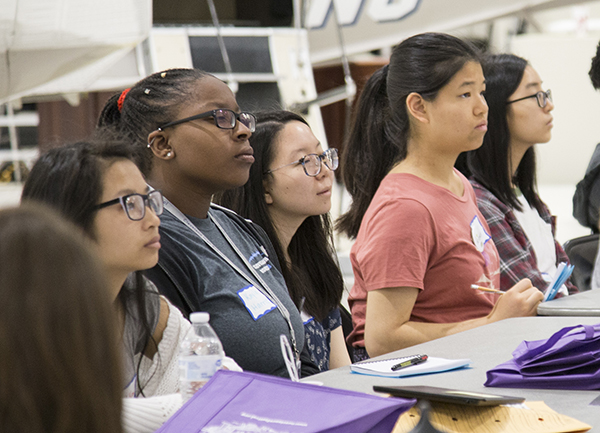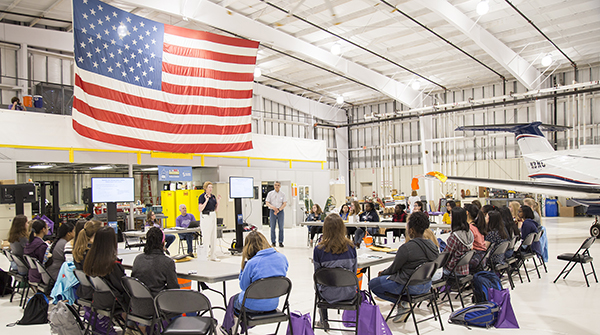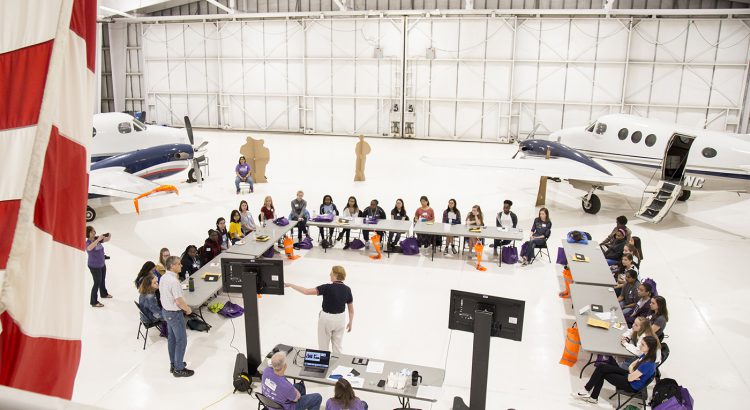
SAS’s Data on the Fly, an event that uses aviation to inspire students to pursue science, technology, engineering and math careers, returned to Raleigh-Durham International Airport on April 12th with a twist. For the first time, all 30 of the students in attendance were girls.
Speakers and instructors were mostly women as well, and included Missy Cummings, a Duke professor who was one of the first female fighter pilots. Other speakers included Jan Squillace, a member of the 99s and general manager of Odyssey Aero Club and Corbi Bulluck, NCDOT Division of Aviation.

The ‘Data on the Fly’ program included the SAS team instructing the girls on how to assemble a Stratux, an open-source portable ADS-B receiver using a Raspberry Pi. Once constructed, the girls were able to attach the device to an IPad and track aircraft in the area.
The event, held in the NCDOT Aviation hangar, was part of SAS’s sponsorship of the N.C. Science Festival, which is taking place across the state in April. The students were also able to tour the airports air traffic control tower.
“We enjoy any chance to introduce young people to the exciting field of aviation with events like Data on the Fly,” said Bobby Walston, Director, NCDOT Division of Aviation. “There are tremendous opportunities for a career in aviation, and by exposing students to this field early we can hopefully help them catch the same lifelong interest that so many of us have.”

About SAS
SAS has 40+ years of analytics innovation and describes themselves as a trusted analytics powerhouse for organizations seeking immediate value from their data. With a deep bench of analytics solutions and broad industry knowledge, SAS keeps their customers coming back and feeling confident. With SAS®, you can discover insights from your data and make sense of it all. Identify what’s working and fix what isn’t. Make more intelligent decisions. And drive relevant change.



